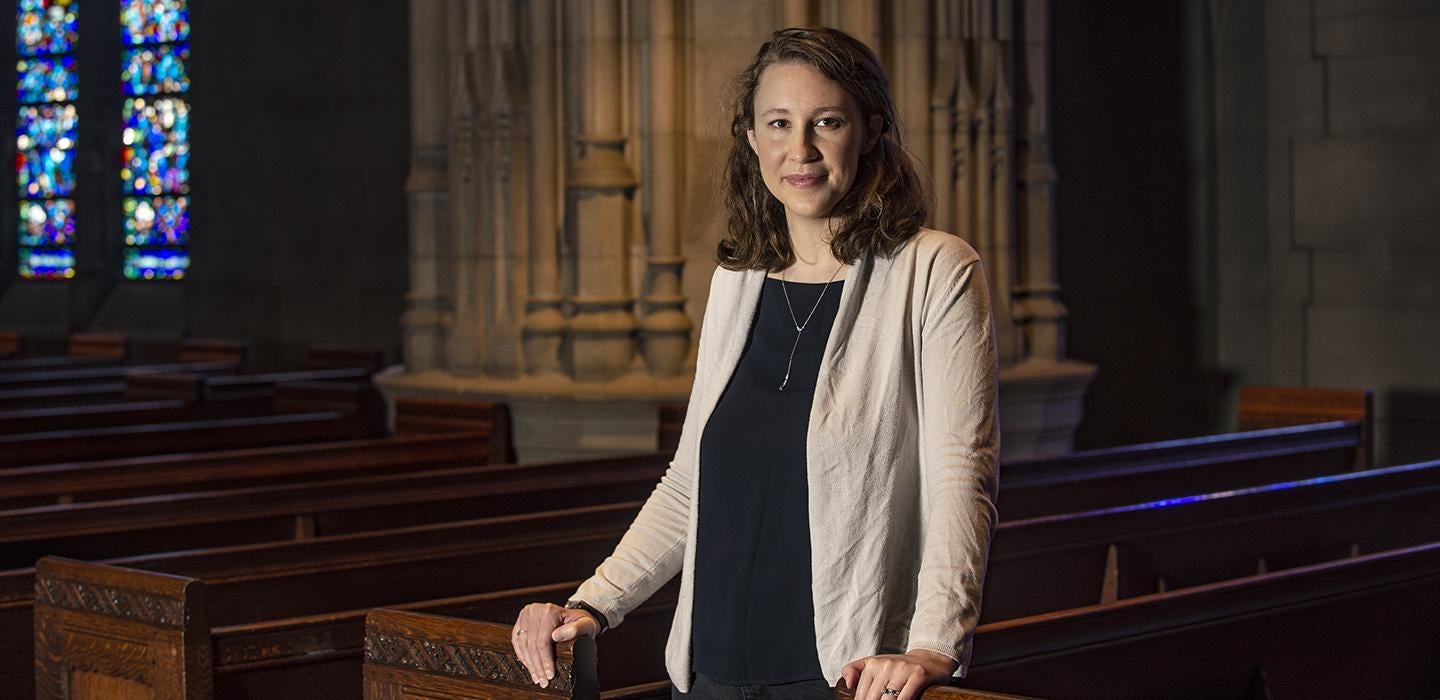
Subscribe to Pittwire Today
Get the most interesting and important stories from the University of Pittsburgh.The year was 1737, and Émilie du Châtelet was conducting an experiment.
In her family’s countryside villa, she dyed a bedsheet in seven colors, placed it in front of a fire and timed how long it took each section to dry. Cloth dyed red took the longest to dry, she found, with purple drying the quickest.
It was an early indication of the relationship between the color of light and the energy it carries — and a refutation of the ideas of Isaac Newton and du Châtelet’s lover Voltaire, who both believed that heat itself had weight.
“That’s one place where she went rogue and sort of found her own way,” said Assistant Professor Marian Gilton in the Kenneth P. Dietrich School of Arts and Sciences, who teaches about du Châtelet in a history and philosophy of science class. “We’ve had a lot of fun discussing the fascinating stories of this person who I kind of see as illustrating what you see in a lot of a lot of the stories of women in science and mathematics, especially from earlier time periods.”
Although acknowledged in her own time, du Châtelet’s place in science was largely forgotten, having been overshadowed by her male contemporaries. It’s only recently that she and other women active at the time have begun to receive proper recognition for their contributions, Gilton said.
A talented natural philosopher in her own right, du Châtelet also wrote the authoritative French translation of Newton’s “Philosophiæ Naturalis Principia Mathematica,” in which he explained his theories of movement and gravity. The translation also included her own commentary on the work, helping to bridge the divide between English and French approaches to mathematics.
“It’s kind of her own take on what Newtonianism is,” Gilton said. “Part of what she’s doing is negotiating these different approaches to this new mathematics of calculus, but she’s also very creative. And she’s willing to go against Newton and beyond Newton, too.”
[Notable Pitt women you should know.]
Although Gilton describes herself as a “historian of ideas,” focusing on the headier and more metaphysical side of how physics developed, she also has an enduring interest in the historical contributions of women to science.
In her class titled “The Newtonian Revolution,” Gilton has her students grappling with both the nitty-gritty physics of Newton’s discoveries and with the contributions of du Châtelet and Mary Somerville, who helped popularize Newton’s ideas a century later. (She has students read a book called “Seduced by Logic,” which she recommends to anyone looking to learn more about du Châtelet.)
“It’s complicated and messy trying to sort out the social structures as to why and how and to what extent women have been, and still are, excluded and discouraged from really participating,” Gilton said. “It makes for some really good discussions.”
In one assignment, Gilton even has students put themselves in du Châtelet’s shoes, writing correspondences from her perspective.
What Gilton sees in du Châtelet and her contemporaries — beyond their creativity and tenacity — is something that she believes has relevance even to those raising young girls today. du Châtelet, Gilton said, had a uniquely empowering upbringing: At a time when most aristocratic parents restricted their young girls’ activities, du Châtelet was allowed to read and discuss any book she wished from the family library.
“I think that openness to say, ‘Well, what are you interested in? Let’s go explore that’ — I think that’s incredibly valuable,” Gilton said. “I have to think those early experiences, that freedom to read and ask questions, is what awakens this intellectual fire that then can’t get snuffed out.”
— Patrick Monahan, photo by Mike Drazdzinski


